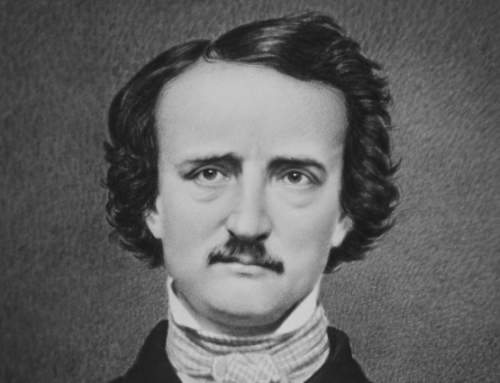 Marriage is being redefined by the United States Supreme Court and the lower federal courts. And with that redefinition has come a redefinition of the separation of powers and maybe of “the power of our people to govern themselves,” as Justice Antonin Scalia said in his dissent in United States v. Windsor, the homosexual marriage case, last year. The refusal by the Supreme Court one month ago to take up homosexual marriage again left the lower federal courts free to compel the states to change that most basic and important institution which, although diminished in the last fifty years, is an institution that almost all the states had very recently decided through extraordinary democratic means — that is, state constitutional amendments — to preserve. The federal courts have not only negated those state acts; they have also decided, following Windsor, that sexual morality has “evolved” enough to include homosexual acts and that those acts must be recognized and encouraged by government. As of this writing, there are still eighteen traditional marriage states left, representing roughly the midsection of the country. And on November 6th, the Sixth Circuit of Appeals, in a sudden countering of the other federal appeals courts, upheld the marriage laws of Ohio, Michigan, Tennessee, and Kentucky.
Marriage is being redefined by the United States Supreme Court and the lower federal courts. And with that redefinition has come a redefinition of the separation of powers and maybe of “the power of our people to govern themselves,” as Justice Antonin Scalia said in his dissent in United States v. Windsor, the homosexual marriage case, last year. The refusal by the Supreme Court one month ago to take up homosexual marriage again left the lower federal courts free to compel the states to change that most basic and important institution which, although diminished in the last fifty years, is an institution that almost all the states had very recently decided through extraordinary democratic means — that is, state constitutional amendments — to preserve. The federal courts have not only negated those state acts; they have also decided, following Windsor, that sexual morality has “evolved” enough to include homosexual acts and that those acts must be recognized and encouraged by government. As of this writing, there are still eighteen traditional marriage states left, representing roughly the midsection of the country. And on November 6th, the Sixth Circuit of Appeals, in a sudden countering of the other federal appeals courts, upheld the marriage laws of Ohio, Michigan, Tennessee, and Kentucky.
In a series of three essays, of which this is the first, we will describe what has happened — that is, what really has happened — and its implications for marriage, for judicial supremacy, and for democracy itself.
The reporting in the media, who are the publicists of the homosexual movement, has been quite minimalist. “Marriage equality” is the sum of the issue, and who can be against that? Standard reporting and analysis, including in the conservative media, has been only about the result: “another victory for gay marriage which is increasingly accepted by the American people at large” ; or: “the federal district court in the state of Portlandia has held that state’s law unconstitutional and ordered the state to allow same-sex marriage.” However, there is some justification for this minimalist reporting. The legal proceedings and the legal doctrines cited and used by the federal courts are so unprecedented and unprincipled that they provide a daunting task for anyone, including this writer, to make any sense out of them.
What have been unrecognized by some and deliberately covered up by others are: that there is no basis in American law or our Constitution for the redefinition of marriage; that the federal courts have stretched out of shape all procedure and due process as well as law; that a fundamental basis for the several courts’ rulings has been court-ordered access to the public purse for homosexuals who have been seeking the governmental benefits related to marriage; that the lower federal courts are ruling that marriage is not “rational;” that all of the decisions are based on the hitherto undreamt idea that marriage can be sued; that marriage in this country has always been a matter of secular not religious law; that the 2013 Windsor decision does not really provide a basis for overturning the marriage laws of the states; that Windsor has absorbed the sexual revolution into constitutional law; and — ponder this — that Windsor is the only Supreme Court decision in history whereby the dissent immediately became the majority view.
Almost more startling has been the collusive nature of the lawsuits against marriage whereby several state attorneys general and the United States attorney general have refused to do their duties as executive branch enforcers of lawful legislation. Thus, even the heretofore seeming right of all Americans to have their “day in court” has been subverted by the refusal of those attorneys general to defend marriage. Thus, several of these so-called “lawsuits” have really been a cooperative arrangement among certain attorneys general, the federal courts, the homosexual lobby, and the media.
There has never been a legal or constitutional issue like this. Marriage is not a creation of law; heretofore no one ever thought that it could be sued. It is an institution existing by nature that has always been recognized, protected, and promoted by the law of every country in history. Based on the natural sexual attraction of men and women and that supremely important interest of society, procreation, marriage created the law, not vice versa. It has been an assumption of society. As the United States Congress stated when it found it necessary to define marriage as part of its passage of the Defense of Marriage Act (DOMA) in 1996, “we are making explicit what has always been implicit.”
Of the 195 countries in the world, only sixteen, all in the West, have homosexual marriage. That includes only nine of the fifty countries in Europe; and, of the five largest European countries, notably excludes Germany and Italy but includes France, England, and Spain, and even excludes Finland of the four Scandinavian countries. Of the thirty-six countries in the Americas, only five — the United States, Canada, Argentina, Brazil, and Uruguay — have homosexual marriage. Outliers are Iceland and two countries with English legal systems, New Zealand and South Africa, the latter of which has polygamy. The first same-sex marriage as a public act in the history of the world was performed in the Netherlands in 2001.
 Indeed, with the recent and sweeping victories of the homosexual movement not only in marriage but also in the military and even against the Boy Scouts, the United States may now be considered the world center of homosexuality. And feeling its strength, the American homosexual movement is starting to insist that all departments of the Obama Administration that deal with other countries must undertake specific measures to spread homosexuality overseas — that is, through American “foreign aid” (or in other words, Yankee imperialism). The recent “coming out” by Apple CEO Tim Cook has been widely perceived as part of that effort. Apple, with its wealth, worldwide reach, and exceptional glamour, could undertake its own foreign policy in this field.
Indeed, with the recent and sweeping victories of the homosexual movement not only in marriage but also in the military and even against the Boy Scouts, the United States may now be considered the world center of homosexuality. And feeling its strength, the American homosexual movement is starting to insist that all departments of the Obama Administration that deal with other countries must undertake specific measures to spread homosexuality overseas — that is, through American “foreign aid” (or in other words, Yankee imperialism). The recent “coming out” by Apple CEO Tim Cook has been widely perceived as part of that effort. Apple, with its wealth, worldwide reach, and exceptional glamour, could undertake its own foreign policy in this field.
As of this writing, homosexual marriage exists in thirty-two states. That has been accomplished overwhelmingly by federal court order. Before the Windsor decision in May 2013, only five states, Vermont (the first in 2009), New Hampshire, New York, Maryland, and Washington had created homosexual marriage by legislation. Maine had done it by citizen initiative, and Massachusetts, New Jersey, Iowa, and Connecticut had done it by order of their supreme courts. Since the 2013 Windsor decision of the United States Supreme Court, four additional legislatures — Rhode Island, Delaware, Hawaii, Illinois, and Minnesota — have done so. The remaining eighteen states of the thirty-two states have had their state marriage laws repealed by order of the lower federal courts after the Windsor decision.
On October 6th of this year, the Supreme Court refused the petitions of the states of Virginia, Indiana, and Wisconsin to have the Court review the decisions of two federal circuit courts of appeal, the Fourth and the Seventh, that had nullified their marriage laws. That refusal surprised almost everyone. Perhaps it should not have. The agreement of four justices are required to have the Court accept a case from the lower courts. We can speculate that none of the four dissenters in Windsor — Justices Antonin Scalia, Clarence Thomas, Samuel Alito, and John Roberts — wanted the Court to finish the job in Windsor and have it declare a constitutional right to homosexual marriage and that homosexuals are a protected class. It can also be speculated that the majority in Windsor — Justices Anthony Kennedy, Ruth Bader Ginsburg, Stephen Breyer, Elena Kagan, and Sonia Sotomayr — were quite satisfied with the lower federal courts having taken the ball and run with it. For, until the Sixth Circuit’s ruling on November 6th, all the courts of appeal had been ruling in favor of homosexual marriage by one rationale or another. On the other hand, the Windsor majority may not be certain that they have a definite majority for a sweeping constitutional right to homosexual marriage with its concomitant elevating of homosexual persons to a preferred class in the law. And they themselves may be wary of a permanent flood of lawsuits seeking to vindicate a wide variety of homosexual rights and to require the accommodations of society to homosexuality.
We will deal with Windsor and the path to Windsor in the next installment of this series. But we begin with the beginning. The campaign for legal recognition of homosexual marriage was initiated by the ruling of the supreme court of Hawaii in the case of Baehr v. Lewin in 1993. Conceding that marriages between men and women “are the only state-sanctioned marriages currently acknowledged in this country,” that court concluded that that there was no right to homosexual marriage under the Hawaiian Constitution. Nevertheless, the court ruled that restricting marriage to a union of a man and a woman was a new form of sex discrimination, ignoring, as the dissent said, that the Hawaii marriage statute “treat everyone alike and applies equally to both sexes,” and, not to mention, that the statute had not been enacted with any discriminatory intent or purpose. But the Hawaii court, unlike later courts, did not directly order the enactment of homosexual marriage but remanded the case to the trial court for further consideration in light of its ruling. Before the case could be finally resolved, however, the voters approved an amendment to the state constitution preserving marriage and making the case moot. Whereupon the state legislature partly undermined that development by enacting “civil unions.”
But, in Baehr v. Levin, the Hawaii supreme court had become the first court to bespeak an actual definition of marriage, as opposed to the understanding of marriage which everywhere in the country had always been obvious but “implicit.” The court looked to its previous cases concerning divorce and marital property rights and said that marriage was “a partnership to which both partners bring their financial resources as well as their individual energies and efforts.” Concerning that, would anyone but a court with a decided agenda seek to define marriage in terms of divorce and property rights? In evading a statement of the essence of marriage, the court used parts to define the whole. Moreover, the supposed definition could serve as a definition of any number of “partnerships:” business, social, family, as well as of marriage.
 As a direct reaction to the Hawaii supreme court introducing the concept of homosexual marriage for the first time into American public acts, the United States Congress in 1996 passed the Defense of Marriage Act (DOMA) that allowed states to refuse to recognize homosexual marriages that may become legalized in other states and restricted benefits in federal programs having to do with marriage to married couples. At the time, there were no states — and no countries in the world — that had homosexual marriage. In section 3 of the Act, DOMA defined marriage as “the legal union between one man and one woman as husband and wife” and “spouse” as “a person of the opposite sex who is a husband or a wife,” that is, as already pointed out, making “explicit what has always been implicit.” Section 2 of the Act, wherein each state was protected from the acts of any other states, was not and has never been sued by the homosexual lobby. DOMA did not prohibit states from enacting homosexual-marriage laws and did not prohibit states from recognizing such laws of other states. Section two of the DOMA passed 84-14 in the Senate, with Democrats in favor 32-14; and 342-67 in the House with Democrats in favor 118-65. It was reluctantly signed by President Bill Clinton, who had advocated for gay rights and who noted that the vote was veto-proof.
As a direct reaction to the Hawaii supreme court introducing the concept of homosexual marriage for the first time into American public acts, the United States Congress in 1996 passed the Defense of Marriage Act (DOMA) that allowed states to refuse to recognize homosexual marriages that may become legalized in other states and restricted benefits in federal programs having to do with marriage to married couples. At the time, there were no states — and no countries in the world — that had homosexual marriage. In section 3 of the Act, DOMA defined marriage as “the legal union between one man and one woman as husband and wife” and “spouse” as “a person of the opposite sex who is a husband or a wife,” that is, as already pointed out, making “explicit what has always been implicit.” Section 2 of the Act, wherein each state was protected from the acts of any other states, was not and has never been sued by the homosexual lobby. DOMA did not prohibit states from enacting homosexual-marriage laws and did not prohibit states from recognizing such laws of other states. Section two of the DOMA passed 84-14 in the Senate, with Democrats in favor 32-14; and 342-67 in the House with Democrats in favor 118-65. It was reluctantly signed by President Bill Clinton, who had advocated for gay rights and who noted that the vote was veto-proof.
As will be seen in the next installments of this series, the language of the committee report of the House of Representatives has been and remains the source and subject of all judicial discussions about DOMA and about marriage itself. The House stated that there were two purposes of the law: defending “traditional heterosexual marriage” and protecting the “right of the States to formulate their own public policy” with respect to marriage without being coerced by the acts of any other state. The committee report went on to state four “governmental interests” in passage of the Act. The first was “defending and nurturing the institution of traditional, heterosexual marriage.” The second was defending “traditional notions of morality . . . about human sexuality” about “procreation and child rearing,” which, although they may “intersect” with religious views about marriage, were matters of the “civil laws.” The third was to protect “state sovereignty and democratic self-governance” from the courts, for as “the degree of court involvement increases, to that extent democratic self-governance over such matter is limited.” The fourth was to prevent state actions on marriage from having the effect of allocating federal financial benefits based on marriage. “To deny federal recognition to same-sex ‘marriages’ will thus,” the report concluded, “preserve scarce government resources, surely a legitimate government purpose.” That is, Congress was invoking its power of the purse.
Thus far, we have seen that marriage was a matter for state law and that everyone knew what marriage was. There was no need to define it until the challenge of homosexual marriage. Next: “The Courts Invent Homosexual Marriage.” Books on the topic of this essay may be found in The Imaginative Conservative Bookstore.







I think we can blame Roe v Wade for this sorry state of affairs. That’s when the Judicial Branch, on its own, gave itself sweeping authority to decide huge social/cultural issues with zero input from either elected branch of government, never mind the people as a whole. And, having assigned themselves this new and vast power, the judges seem in no hurry at all to give it up.
Tim Cook’s coming out only elicited the following thought:
Well, what else can Apple be proud of? The poor chaps are failures. They have just recently come out with a big screen phone, they are light years behind Samsung, which has set an amazing standard with the Note 2 and now Huwaei is making Apple-equivalent products for a fraction of the retail price. Given the failure of Apple to generate great technology at affordable prices, no wonder they fall back on Gay Pride.
Don’t even get me started on Nasa. Another American astronaught is suited up and ready to go to ISS via Russian rockets because the US government is putting money into gender studies instead of engineering programs.
As for foreign policy:
If John McCain thinks America will have any chance at “spreading democracy” in the Arab world with a State Department demanding countries adopt anal sex as the foundation of culture and law – he is living a pipe dream.
This article is great because the Gay lobby is not merely a threat to marriage, it is destroying American credibility in foreign affairs and destroying any shreds of the idea that America is a leader on the world stage.
It is just sad what has happened with marriage, and unfortunately I don’t think it can be reversed. I hope I’m wrong.